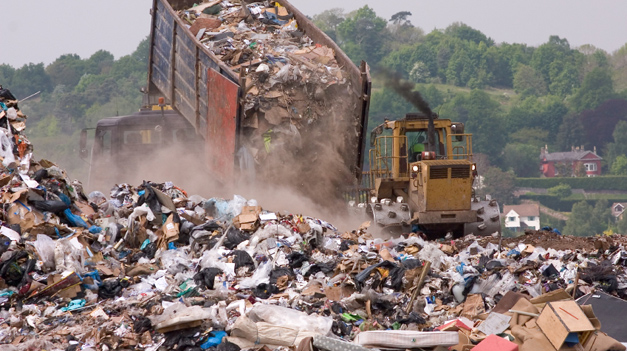
The Waste (England and Wales) Regulations 2011 (S. I. 2011/988) came into force on 29 March 2011 with the exception of Regulation 12 in relation to the waste hierarchy (see below) which will come into force later in the year. The Regulations are necessary largely to transpose the revisions to the Waste Framework Directive (Directive 2008/98/EC of the European Parliament and of the Council on waste) which should have been transposed by 12 December 2010.
These Regulations affect all companies within the waste chain including waste carriers and brokers. In particular, the measure requires businesses to apply the waste management hierarchy when transferring waste, and to include a declaration on their waste transfer note that this has been done. There are amendments to controls on hazardous waste and some new categories of waste are excluded from control by virtue of these Regulations.
As from 1 October 2011, the waste hierarchy provisions will come into play. After that date the transfer of waste has to be accompanied by a waste transfer note (or consignment note for hazardous waste) declaring that the waste management hierarchy has been applied in dealing with the waste. The waste hierarchy lists preferences for waste management in the following order:
• prevention;
• preparing for re-use;
• recycling;
• other recovery (for example, energy recovery);
• disposal.
The transfer note should also include a SIC code (the 2007 Standard Industrial Classification code of the person transferring the waste except for hazardous waste consignment notes where the 2003 SIC codes continue to apply). The application of the waste hierarchy is also in future a standard condition of an environmental permit for an operation which generates waste, and will be added to existing permits as and when they are reviewed. The waste hierarchy is also set to apply to waste collections with a requirement of separate collections of waste paper, metal, plastic and glass from 1 January 2015.
The Regulations also introduce a two-tier system for waste carrier, broker and dealer registration. Companies which carry, broker or deal in controlled waste produced from another source need to register as an upper tier carrier or broker. Companies carrying construction and demolition waste will also need to register in this upper tier – even if carrying their own waste.
There is a lower tier category of registration. This covers persons who only carry, broker or otherwise deal in the following categories of waste:
• animal by-products;
• waste from mines and quarries;
• waste from agricultural premises;
In addition there are certain groups that will need to register in this lower tier if carrying, brokering or dealing in other people’s waste namely:
• a waste collection, disposal or regulation authority; and
• a charity or voluntary organisation.
Most importantly, from the end of December 2013 companies will be required to register as a lower tier carrier where they normally and regularly carry their own controlled waste (other than construction or demolition waste, which falls into the higher tier – see above). This change was brought in to rectify a gap identified by the European Court of Justice ruling in European Commission v Italy (Case C-270/03 involving infraction proceedings by the European Commission against Italy).As this suggests, most existing carriers of their own waste are not registered but those which are will be transferred automatically into the lower tier of registration. Registration in this lower tier is to be free and will last indefinitely, although as with other registrations, it may be subject to revocation.
Since the concept of a waste ‘dealer’ is new, where companies are already registered with the Environment Agency as a waste carrier or broker, the Environment Agency will automatically include dealing in waste to any existing registration. When a waste carrier or broker certificate comes up for renewal, on the payment of an appropriate fee, it will be re-issued as an upper tier waste certificate. As with existing registrations for waste carriage/brokerage, upper tier registration lasts for three years.
The regulations introduce a new category, H13 Sensitizing, to the list of properties that help define waste as hazardous. Sensitizing substances cause hypersensitization, meaning that the substance will have adverse effects if inhaled or if it penetrates the skin and allowing further exposed to the substance. The former category H13 now becomes H15. This adds ecotoxicity to the properties that can define a leachate as hazardous. These changes mean that some non-hazardous wastes might now be reclassified as hazardous wastes.
As indicated above, certain categories of waste are excluded, by virtue of the Regulation, from waste controls (other than the duty of care in relation to waste under section 34 of the Environmental Protection Act 1990).
Activities dealing only with excluded wastes fall outside control so that an environmental permit or exemption is no longer necessary for:
• the landspreading of animal by-products as covered by the Animal By-Product Regulation (see now the Animal By-Products (Enforcement) (England) Regulations 2011 (SI 2011/881)), organic fertilisers and soil improvers made from Category 2 and 3 processed animal protein, milk spread outside the farm of origin or digestive tract content;
• the incineration of dead pets in crematoria with a capacity of less than 50kg per hour;
• handling certain faecal matter, straw, farming and forestry materials dependent on how the material is used and its potential for harm to the environment and/or human health;
• management of radioactive waste, which is controlled by radioactive substances regulation though activities involving wastes covered by certain radioactive substances exemption orders may require an environmental permit.
Note that the Regulations repeal the following enactments:
• The Environmental Protection (Duty of Care) Regulations 1991;
• The Waste Management Licensing Regulations 1994;
• The Controlled Waste (Registration of Carriers and Seizure of Vehicles) (Amendment) Regulations 1998;
• The Environmental Protection (Duty of Care) (England) (Amendment) Regulations 2003;
• The Environmental Protection Act 1990 (Amendment of Section 57) (England and Wales) Regulations 2005.







